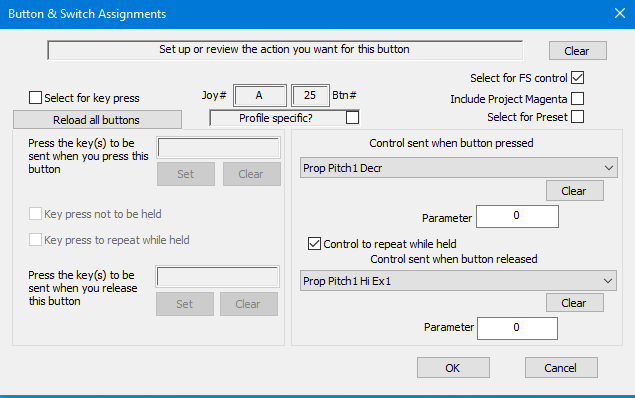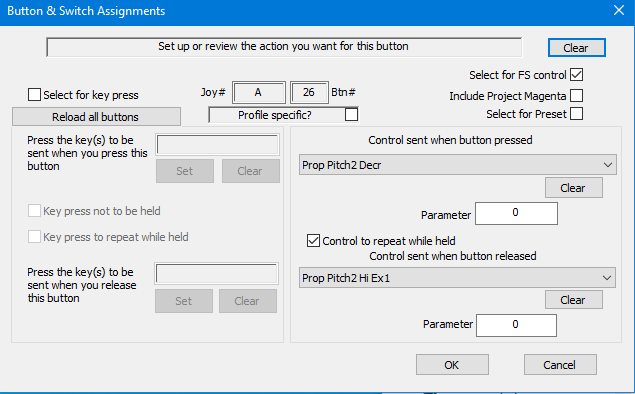Loving the new Black Square upgrade to the Asobo BE58 Beech Baron. However, in striving to fly as close to reality as possible we have been researching the elevator trim setting, particularly for take-off.
Until now we have used the Raytheon Beech Baron BE58 Pilot’s Operating Handbook. It shows how to calculate C of G settings and has a graph to calculate the take-off setting. The problem we have is the empty aircraft weight (the OEW - which is aircraft prepared for service), but excluding crew, passenger and cargo weights, as well as excluding any fuel weight. We have used an OEW of 3,911 lbs.
The Black Square Asobo Baron shows the equivalent OEW weight of 3,113 lbs. If we use this weight, then when we enter the graph for the take-off C of G we find the intersect is off the page, i.e. the aircraft is outside take-off limits.
Our question is, is the Black Square figure correct? It seems odd that the new aircraft is 800 lbs lighter than the previous model. If it is, do we need to find a new C of G graph from somewhere?
The POH I have shows a sample W&B with an Empty weight of 3500 lbs.
I downloaded a G58 Manual, and the lowest weight on it’s table is 3600 lbs. Unfortunately, it didn’t give a sample W&B.
3158 lbs is the empty weight in the default version, too. So I can see why BS started there, but, you’re right, that does seem awfully light. Too bad BS doesn’t include a W&B calc in its manual.
Some online research of various real-world Baron B58 sites shows OEW empty weights as follows:
www.globalair.com>aircraft for sale … 4,000 lbs
https//beechcraft.txtav.com/en/baron-g58 … 3,965 lbs
disciplesofflight.com/beechcraft-58-baron/ … 4,030 lbs
flugzeuginfo.net/acdata-php/acdata-beech55-en-php … 4,017 lbs
Beechcraft Baron - Wikipedia … 3,156 lbs
The wikipedia site appears to be the OEW for the B55 Baron, whilst the German site, although listing the B55, seems to be for the B58 Baron.
The question now is: how do we change the OEW to a more ‘realistic’ figure. Looking in the Community folder I have navigated to the aircraft.cfg file for the BS Baron BE58. Opening this aircraft.cfg file in Notepad, I have changed the empty OEW to a new figure of 3,996 lbs/1,812 kgs. I note the conversion factor used was 2.205 lbs/kg. However, on starting MSFS and loading the BS BE58 Baron, the fuel/cargo load menu still shows the previous figures. I am now stuck!
Thanks, but I have this POH (less the ‘Sample’ load form (which says this does NOT represent any particular aircraft!).
The problem as I see it is that an incorrect OEW weight (most probably based on the Baron B55 model) has been used. There appears to be no way we users can alter this, so I guess it’s up to Black Square (and possibly also Asobo, as changing the BS aircraft.cfg file has no effect).
So the weight and balance section of the Flight_Model.cfg file does not help?
[WEIGHT_AND_BALANCE]
max_gross_weight = 5500
empty_weight = 3120
reference_datum_position = 0, 0, 0
empty_weight_CG_position = 0.33, 0, 0
CG_forward_limit = 0.10
CG_aft_limit = 0.30
empty_weight_pitch_MOI = 6200
empty_weight_roll_MOI = 3500
empty_weight_yaw_MOI = 9000
empty_weight_coupled_MOI = 100
activate_mach_limit_based_on_cg = 0
activate_cg_limit_based_on_mach = 0
1 Like
You should be able to adjust all that in the flight_model.cfg. Just adjusting the empty weight may not solve all the problems though. The c.g. limits are correct (10-30%) per the POH, but everything else still needs to be correct (i.e. MAC length, location of empty weight c.g., station arms). Luckily, Beechcraft is really good about including all of these in detail in the POHs.
Thank you for the most informative replies. I have been trying to edit the aircraft.cfg file, but with no luck.
I shall study your suggestions very closely and try them out. I am aware of the possibility of “unintended consequences” as you suggest. I do have the POH.
We actually use the BE58 Baron on two other major simulation platforms, together with the POH. The models on the other platforms both have empty weights of +/- 4,000 lbs, which correlates to the real-world figures that we have obtained, as you have seen above in my previous posts.
Interestingly, when I re-launched MSFS 2020 today, and tried to edit the aircraft.cfg file, the file had accepted my new figure of 3,996 lbs. I did check the Flight_Model.cfg and the new increased Empty Weight was entered there as well.
I was worried about a possible C of G position change, but checking the first (enlarged) Weight & Balance page prior to final loading of the chosen aircraft, the indicated C of G was still showing 12.30% MAC. There may also be a pitch inertia moment change, but I decided to ignore this at this stage.
I then flew the aircraft and, in essence, everything apppeared quite normal. Performance appeared to reflect the increased weight, both on acceleration on the runway, and in rate of climb when airborne.
I have found nothing to persuade me that we cannot use what I believe to be an accurate and true value for the Empty Weight.
1 Like
Except that …
When we practise engine fail situations we have found that the performance of the BS Baron BE58 is not realistic and is far too low. It mirrors the performance of the older Piper PA23 Apache, i.e. with 2 pilots on board and half tanks fuel, EFATO at sea level, standard conditions, you are only just able to achieve a positive climb rate.
This comparison comes from real-world experience in the late 1960’s when I was a student at flight school. The school had both aircraft and were transitioning to the Baron. I was trained on the Apache and watched in awe at the Baron’s single-engine performance after EFATO. There was certainly no difficulty in getting a good single-engine rate of climb. The performance was far superior.
Could this be because BS base their performance on the lower weight, and that the performance of the BS Baron is based on a weight 800 lbs lower?
Hi,
I have been able to get 300-500 fpm climb rates on one engine in the BS Baron with default weight at blue line airspeed.
Presumably the reason you cannot achieve these climb rates is that the dead engine’s propeller does not fully feather. At least that is what used to happen to me.
To fully feather the prop I needed to install FSUIPC and assign my Honeycomb Bravo prop levers a feather function when fully pulled back.
See below for details:
https://www.avsim.com/forums/topic/602470-feathering-the-props-with-a-throttle-quadrant-using-fsuipc7/
Since applying this all my twin props can feather their props. So whenever I fly a twin prop, I turn on FSUIPC, except for the Milviz C-310 which can do it natively.
This is what my left prop lever assignment looks like in FSUIPC with the Honeycomb Bravo:
And here is the right prop lever assignment:
Hope this helps.
Thank you for your very informative reply - much appreciated.
Firstly, we will certainly try your advice given regarding using FSUIPC7. The entry in the box “Control sent when button released” could be the critical element. Other than that, your FSUIPC7 entry is exactly the same as ours except that we put a tick in the box to make it Profile specific.
Secondly, regarding the performance you gained by using the default empty operating weight is understandable - you are reducing the aircraft weight by 20% +/-.This is exactly what we got when first using that same figure. The problem for us result when trying to use fuel/payload figures that correlate with real world loading and C of G limits. When we use a real world empty operating weight (see my previous comments above) the performance reduces significantly and does not correlate with real world B58 Baron experience.
I am delighted to say that, using FSUIPC7, by entering the suggested line “Prop Pitch # Hi Ex 1” into the “Control sent when button released” appears to have solved the problem, both with the prop now fully feathering, but also with restoring single engine performance! (The two are obviously linked)
I have just completed several EFATO at 300 ft aal, both with engine 1 and engine 2, followed by circuits to ILS and full stop landings. The behaviour of the aircraft and the performance on one engine were very realistic. All this done with the empty aircraft weight of 3,911 lbs. This means all the weight and balance calculations now reflect the real-world aircraft.
Very many thanks for finding the solution.
PS: The performance with the incorrect empty aircraft weight of 3,100 lbs must be quite extraordinary!!
1 Like
Hi @ExponentCard287 ,
I am glad that this works for you. 
We’re pleased to see that PC Pilot magazine’s reviewer was in full agreement in the new issue (No. 147, Sept/Oct 2023), giving this new add-on a Platinum Award and an impressive score of 96/100:
“The level of interior and systems modelling is made to an excellent standard and, combined with a detailed failure model, it easily rivals the most complex aircraft currently available for the Microsoft Flight Simulator platform. If you want to get as close as you can to flying a piston twin on your desktop, this one is for you.”
“Black Square’s Analog Baron is an innovative package that captures the challenges of flying piston twins perfectly. The combination of sound systems modelling and authentic flight dynamics makes it one of the more comprehensive renditions of a general aviation aircraft for Microsoft Flight Simulator currently available.”
1 Like

